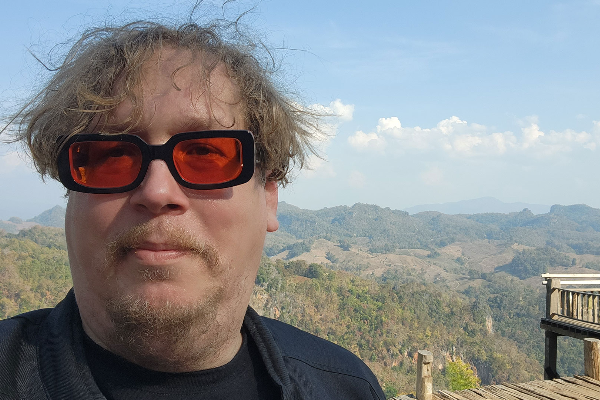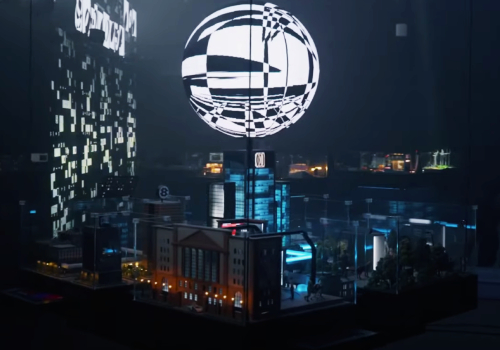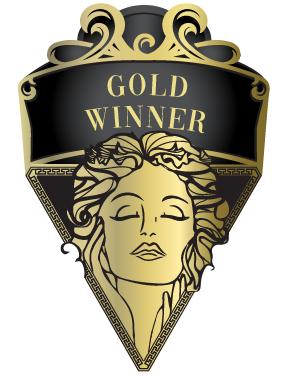
Interview
Ilya Derzaev
1 Please give us a brief bio of yourself and your design background.
My name is Ilya Derzaev, a media artist at Akademia Studio. I got my degree in software engineering and possess fifteen years of working experience in motion designing in televisions. From 2015 to 2020, I was a media artist, an interactive developer of TouchDesigner and Ventuz, a teacher, and a digital producer.
2 What made you become/why did you choose to become a designer/artist?
After graduation from the Faculty of Programming, I realized that creativity is something I'm interested in. After trying different types of creative directions, I settled on generative graphics, which combines what I loved most.
3 Tell us more about your business/company, job profile, and what you do.
I am the head of the development department at the Akademia Studio, the studio creates content for interactive installations and media art. In my work, I combine modern IT solutions and generative design.
4 What does “design” mean to you?
To me, design is development. What is beautifully arranged from the inside is beautifully displayed outside.
5 What’s your favorite kind of design and why?
My most consistent and used type of design would be generative graphics, as I have a programmer's background and logical way of thinking that fits my style.
6 To you, what makes a “good” design?
Relevance makes good design when the focus shifts from excessive decorativeness in favor of functionality.
7 Describe your design style and its main characteristics.
My style in design is determined by the tools that I use in my work, combined with my understanding of the aesthetic ideal. This is a parametric generative graphic based on mathematical principles. Simple geometric shapes in black and white design help to create an understandable minimalistic image.
8 Tell us about your design process.
The process consists of two stages. It all starts with the collection of tools, the selection of methods for processing an array of data. After the craft part, you can start the creative part. And there are no strict regulations here, the starting point is the event for which the content is being developed. The context of what is going to happen becomes the inspiration, and the logic and visual concept of the installations are built on this basis.
9 Do you think your country and its cultural heritage has an impact on your design process?
There is a powerful technical education in Russia. Since my work is based on the basics of logic and programming, I think that the era in which I grew up significantly influenced my transformation as a specialist.
10 Congratulations! As the winner of the 2024 MUSE Design Awards, what does it mean to you and your company and team to receive this award distinction?
Any award is recognition, and we are pleased that our work has been recognized by the authoritative jury for this award in the international community.
11 What was the biggest challenge with this project?
In this project, I was given full carte blanche, on one hand, such freedom of action sounds attractive, on the other hand, the difficulty lies in the fact that in the absence of a framework, it is difficult to independently measure how good this result is and whether it meets the specified criteria because there are no clear criteria, you set them yourself.
12 How has winning an Award developed your practice/career?
Generative graphics is a rather narrow field, recognition from the award shows that it is in demand and interesting, it stimulates development more and more, and inspires the creation of new ambitious projects.
13 What makes your country specifically, unique in the design industry?
Russia geographically and historically combines two types of thinking
14 Where do you see the evolution of design industry going over the next 5-10 years?
This is high automation, parametricity, and the use of AI to create basic circuits regularly. An average neural network will give average results and for their work to have individuality, you need a person who can properly train it. It is these people who, in 5-20 years, we will call the authors.
15 If you were a student entering this industry or an aspiring MUSE Design Awards submitter, what advice would you give them?
As soon as possible, decide on an approach.
16 What resources would you recommend to someone who wants to improve their skills in the design industry?
The main skill in design is watching a lot. You can watch the best in the industry on Behance.
17 Tell us something you have never told anyone else.
I dream that my music will be performed by a symphony orchestra.
18 Who has inspired you in your life and why?
Inspiration is an emotion, and music influences a person's emotional state best of all. I listen to a lot of different directions, and it serves as the best fuel for creativity. At the Yandex Secure Future project, I created a track specifically for the event. In the process of preparing the installations, I realized that I needed musical accompaniment that would fill the space and immerse visitors in the atmosphere of the event. The best solution was to create it yourself.
19 What is your key to success? Any parting words of wisdom?
In my case, it's a combination of healthy curiosity and a strong educational base. My path was formed from the experience I gained in another field and applied it to a new activity
20 Do you have anything else you would like to add to the interview?
Thank you for your attention, and I hope that next year we will be among the nominees for the award.

